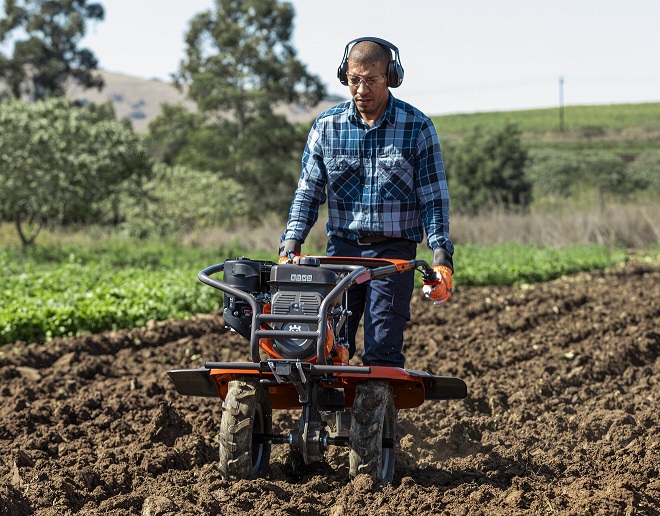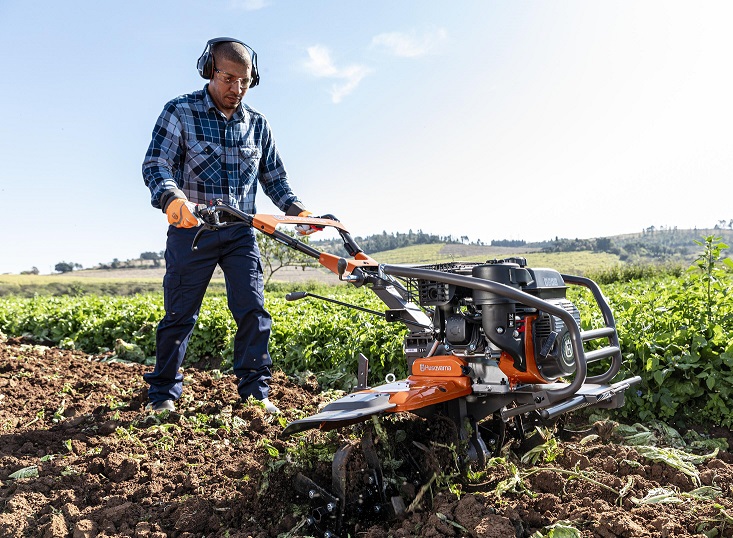BEFORE seeds can take root, the soil must be ready – from ancient fields to modern farms, this truth has been passed down over the centuries – because soil readiness remains the first step toward every successful harvest.
Larry Morris, Husqvarna Area Business Manager for the Western Cape, says that it is not just about clearing ground, it’s about understanding your terrain, choosing the right tools, and setting up conditions that give crops the best possible start.
“If you treat your soil well, it will pay you back with healthy plants and stronger yields.”
So, what does proper ground preparation look like in practice for small-scale farmers, plot owners, and avid gardeners? Morris shares a few practical tips:
1. Don’t go deeper than you need to
Healthy soil develops in layers, and breaking up those layers unnecessarily can do more harm than good. In most cases, turning just the top 5–8 cm is enough to create a fine tilth (loose, fertile soil that allows roots to grow easily), encouraging air, water, and nutrients to circulate freely.
For this, a lightweight garden tiller or cultivator attachment is ideal. These smaller machines are designed for surface work, making them easier to manoeuvre between rows and around beds without adding to soil compaction.
2. Timing is everything
Work the soil when it’s moist, not wet or bone dry. Overworking wet soil causes clumping and damages its structure, while dry soil just turns to dust. A simple test: take a handful and squeeze. It should hold its shape lightly, then crumble when pressed.
Spring, when the ground begins to warm, is usually the best time. Husqvarna tillers, available in various sizes, offer flexibility for preparing soil when conditions are right, whether you’re planting vegetables or maintaining large paddocks.
3. Know when to go deeper
Compacted ground can restrict root growth and reduce water absorption. If you notice poor drainage or stunted plants, it may be time to dig deeper. A powerful rear-tine tiller is designed to break through hard layers, aerating the soil and giving roots room to thrive.
For larger fields, a two-pass system is effective: starting shallow to break the crust, then going deeper to lift and loosen the soil properly.
4. Straight lines, steady passes
Consistency is key. When using a tiller, work in parallel lines across the field. Don’t force or push down on the handles; let the weight and power of the machine do the hard work. On slopes, work across rather than up and down to avoid water run-off and erosion.
For beginners, adjustable handle heights help to maintain balance and rhythm, making long stretches more manageable.
5. No-dig methods matter too
Not every plot needs to be disturbed. For beds that are already healthy, layering organic matter, such as compost, manure, grass clippings, or mulch on top, can naturally boost fertility. Over time, earthworms and microbes will pull these nutrients deeper into the soil.
For smaller gardens or orchards, a battery trimmer with a tiller or dethatcher attachment can help mix organic matter lightly into the top layer without heavy digging.
6. Safety first
Preparation should never come at the cost of safety. Always clear the area of stones, wire and debris before tilling. Wear gloves, sturdy shoes and eye protection, and ensure bystanders, especially children, are kept at a safe distance.
Modern machines are designed with safety features such as adjustable speeds and counterweight balance, but understanding your equipment and working at a steady, controlled pace is the best safeguard.
For beginners, these tips lay the groundwork. For experienced growers, they reaffirm that even trusted practices benefit from occasional reinforcement, especially as tools evolve and conditions change.
“Healthy soil is the starting point of every harvest,” notes Morris. “With seasonal timing, sound technique, and the right tools, like those from Husqvarna, land preparation shifts from chore to investment,” he concludes.
For more information about Husqvarna’s wide range of tilling power tools, please visit:
http://www.husqvarna.com/za/tillers


